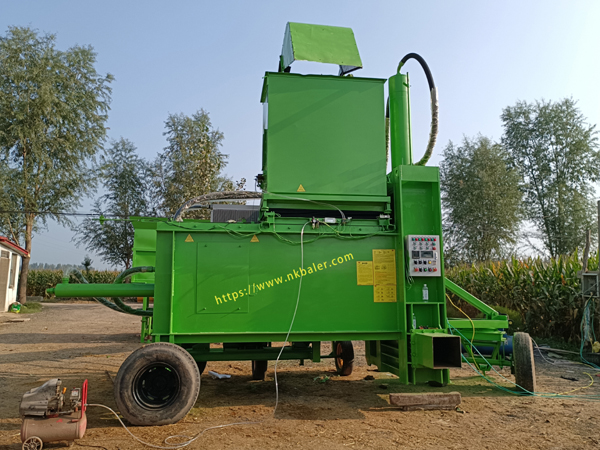How do
Alfalfal Hay Baling Machine transform loose, fluffy alfalfa into tight, sturdy bales that are easy to transport? Behind it lies a sophisticated set of mechanical operating principles. Whether it's a square or round baler, the core process revolves around three key steps: collection, compression, and bundling.
Taking a common square baler as an example, its workflow begins with the pickup. As a tractor pulls the baler forward, the high-speed rotating pickup rack collects the dried
alfalfa hay stalks from the ground and sends them to the pre-compression chamber via a conveyor chain. Then, a reciprocating piston powerfully compresses the alfalfa hay inside the chamber.
This compression process is carried out in stages at high pressure, aiming to maximize the removal of air from the hay, thus obtaining high-density bales. When the bale length reaches the preset value, a precise knotting mechanism (usually using hemp rope or plastic rope) automatically works to firmly bind the bale in place. After bundling, the rear door opens, and the formed bales are discharged from the machine. So, how does a round baler differ? Round balers typically use belt or roller systems to create the winding space.
Alfalfal Hay Baling Machine is continuously wound between the rotating belt or rollers, gradually forming a round bale that is tight on the inside and loose on the outside under the influence of centrifugal force and mechanical pressure. Once the predetermined size is reached, the machine automatically performs netting or rope wrapping and then releases the bale. Understanding these working principles helps users better operate and maintain the equipment, and allows for initial diagnosis when malfunctions occur.

Industries Using Alfalfal Hay Baling Machine
Animal Bedding Suppliers – Bagged wood shavings and sawdust for horse stables and livestock farms.
Textile Recycling – Efficient packaging of used clothing, wipers, and fabric waste for resale or disposal.
Biomass & Biofuel Producers – Compacting straw, husks, and biomass waste for energy production.
Agricultural Waste Management – Handling straw, husks,
corn stalks, and dried grasses efficiently.
Nick machinery bagging machines are mainly used for packaging wood chips, sawdust, straw, paper scraps, rice husks, rice sugar, cotton seeds, rags, peanut shells, cotton fibers and other similar loose fibers. https://www.nickbaler.net
https://www.nkbaler.com
Email:Sales@nkbaler.com
WhatsApp:+86 15021631102


